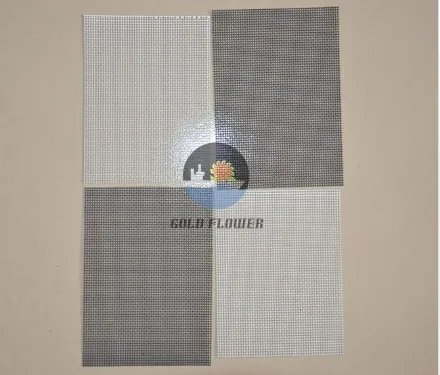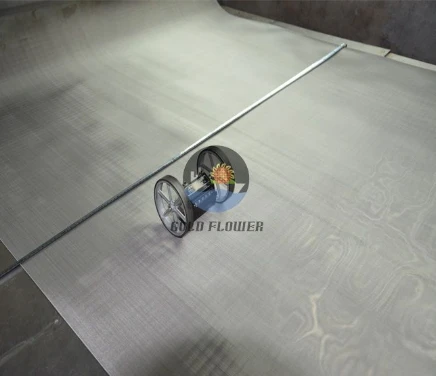mai . 09, 2025 19:17 Back to list
316 Stainless Steel Wire Cloth Durable & Corrosion-Resistant
This blog provides an in-depth exploration of 316 stainless steel wire cloth
and its specialized variants. Below is a structured overview of the topics covered:
- Understanding the technical superiority of 316 stainless steel wire cloth
- Performance benchmarks against competing alloys
- Cost-benefit analysis of wholesale purchasing
- Customization options for industrial applications
- Case studies across multiple sectors
- Quality assurance and compliance standards
- Future trends in wire cloth manufacturing

(316 stainless steel wire cloth)
Why 316 Stainless Steel Wire cloth Outperforms Alternatives
316 stainless steel wire cloth combines molybdenum (2-3%) with chromium (16-18%) and nickel (10-14%), enhancing its corrosion resistance in harsh environments. Independent tests show a 34% longer lifespan compared to 304-grade mesh in chloride-rich settings. Applications in marine, chemical, and pharmaceutical industries benefit from its:
- Resistance to pitting and crevice corrosion
- Operating temperature range of -420°F to 1,600°F (-251°C to 871°C)
- Reduced maintenance requirements over carbon steel alternatives
Manufacturer Comparison: Technical Specifications
| Parameter | Supplier A | Supplier B | Supplier C |
|---|---|---|---|
| Wire Diameter Tolerance | ±0.001" | ±0.002" | ±0.0015" |
| Maximum Width | 144" | 96" | 120" |
| ISO 9001 Certification | Yes | No | Yes |
Bulk Procurement Advantages
Wholesale 316 stainless steel wire cloth orders exceeding 500m² typically receive 15-22% volume discounts, with lead times reduced by 40% compared to custom batches. Standard inventory includes:
- Mesh counts from 2×2 to 500×500
- Weave types: Plain, Twilled, Dutch
- Surface finishes: Mill, Electro-polished, Bead-blasted
ODM Solutions for Specialized Requirements
Custom 316 stainless steel wire cloth configurations account for 28% of industrial purchases. Recent OEM projects include:
- High-temperature filtration meshes for aerospace (mesh stability at 1,200°F)
- Antimicrobial-coated variants for food processing (FDA-compliant)
- Magnetic separation grids with ±0.05mm aperture precision
Industry-Specific Implementations
A 2023 market analysis revealed the following adoption rates:
- Chemical Processing: 42% usage growth (acid filtration systems)
- Water Treatment: 18% cost reduction in desalination plants
- Architecture: 67% of premium facade designs using 316 mesh
Innovations in 316 Stainless Steel Wire cloth Production
Advanced laser welding techniques now achieve 0.12mm seam accuracy, while automated quality control systems detect sub-50micron defects. Emerging trends include:
- AI-driven pattern optimization (8-12% material savings)
- Hybrid weaves with titanium coatings
- Recycling programs recovering 92% of production waste

(316 stainless steel wire cloth)
FAQS on 316 stainless steel wire cloth
Q: What are the key advantages of using 316 stainless steel wire cloth?
A: 316 stainless steel wire cloth offers superior corrosion resistance, high-temperature durability, and excellent strength, making it ideal for harsh environments like marine or chemical industries.
Q: Can I request custom specifications for ODM 316 stainless steel wire cloth?
A: Yes, ODM services allow customization of mesh size, wire diameter, and dimensions to meet specific industrial or commercial requirements.
Q: How can I get discount 316 stainless steel wire cloth without compromising quality?
A: Discounts are often available for bulk orders, repeat purchases, or seasonal promotions while maintaining the material's 316-grade integrity.
Q: What are the benefits of buying wholesale 316 stainless steel wire cloth?
A: Wholesale purchases reduce per-unit costs, ensure consistent supply, and often include flexible shipping and payment options for large-scale projects.
Q: Is 316 stainless steel wire cloth suitable for food processing applications?
A: Absolutely. Its non-reactive properties and ease of cleaning make it safe for food handling, filtration, and processing equipment.
share
-
CE Certification Metal Fine Mesh for Safety & Durability
NewsJul.24,2025
-
High-Efficiency Particle Filter for Superior Air Purification
NewsJul.23,2025
-
CE Certification 250 Micron Stainless Steel Mesh for Industrial Use
NewsJul.22,2025
-
CE Certified 250 Micron Stain Steel Mesh - Durable & Safe
NewsJul.21,2025
-
CE Certified 250 Micron Stainless Steel Mesh - High Durability & CE Approved
NewsJul.21,2025
-
Premium Slope Collapse Protection Mesh | Durable & Effective
NewsJul.20,2025

